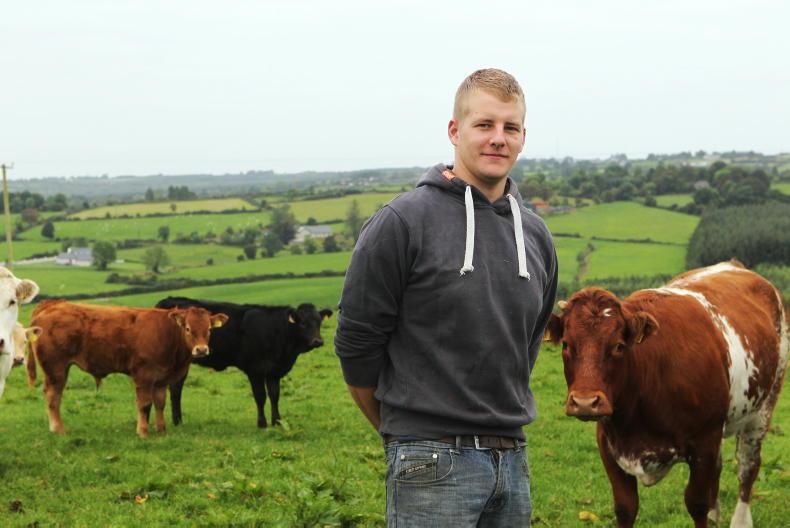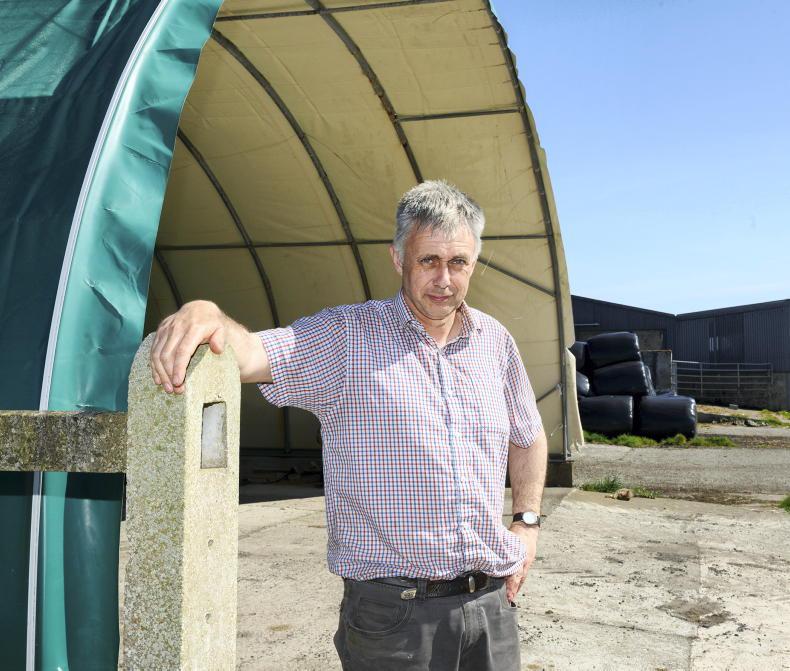By all reports, first-cut silage crops were excellent right across the country.
The period of accelerated growth came at just the right time in the second half of May to boost yields and allow farmers to bank a nice proportion of their winter requirements.
If harvest date was in May, or even the first few days of June on ground that was grazed in spring, quality should be excellent.
If, for any reason, harvest date was delayed this year compared to previous years, the heavier crops will come at the expense of some quality.
Where growing stock or autumn-calving cows are to be fed over winter, this should be kept in mind when setting out plans for second-cut silage.
Harvest date should be pulled back slightly to secure higher-quality forage, where required.
Table 1 outlines the nutrient requirements for second-cut silage based on various crop sizes.
For the majority of cases, a 3tDM/ha (6t/acre fresh weight) would be typical for the second cut. While this may not be a year to build soil P and K indices, nutrient supply should definitely be sufficient to meet crop offtake.
Where slurry is available on farm, it should be used on this ground. As can be seen from Table 2, an application of 2,000gal/acre of cattle slurry should suffice to meet to meet P and K requirements leaving just nitrogen required to be spread.
The amount of nitrogen spread can be adjusted depending on target harvest date and whether you are looking for more quality or quantity for your crop.
In early May we spoke to the farmers below about first-cut silage and outlined how to calculate your fodder needs for the coming winter.
This can be accessed via the QR code (right).
With first cut secured in the yard we caught up with the lads to see how silage supplies have progressed.
Kieran Henry,
Tubbercurry, Co Sligo

Kieran Henry.
Acres: 120.System: suckler beef and contract-rearing dairy heifers.Fodder required: 700 bales.Fodder in yard: 460 bales (66% of requirement), (290 first cut, 90 surplus, 80 carryover).Applied for fodder support scheme: yes.First cut was harvested across two dates. The earliest was on 13 May while more was made on 29 May. There was surplus grass to be taken out at the same time as first-cut silage and we have 90 bales of surplus grass in the yard. Overall, I was happy with first-cut yields which averaged 8.5 bales/acre.
The same ground has been closed for a second cut. I spread 2,000gal/acre of slurry with a dribble bar on as much silage ground as I had slurry for directly after harvest. Fertiliser went out in early June, with two bags of 18-6-12 going on any ground that didn’t get slurry and a bag was spread on what did. All silage ground got a bag of urea/acre.
I am confident that between what is closed for second cut and with some more surplus bales that I know we will get, we will secure more than enough silage for winter to hold the same stock numbers as last year.
Sean Hayes, Tulla, Co Clare

Sean Hayes.
Acres: 140.System: suckler to finish.Fodder required: 1,035t.Fodder in yard: 994t (91% of requirement).Applied for fodder support scheme: yes.There was a great return from first-cut silage which was harvested in mid-May. In the last fortnight, there was a huge amount of growing. Both the main cuts of silage are put into two separate pits and we only bale whatever silage we make from surplus grass. At this stage, we have made just over 100 bales off the grazing ground, which is a great boost in securing enough fodder for the winter. These were made during the weeks of really high grass growth in late May and the first week of June.
I have closed 30 acres for second cut, which will see us secure sufficient fodder for winter and give us a nice amount of buffer if we are faced with a prolonged winter period. Silage ground received 2,500gal/acre of slurry, which should be more than enough to meet P and K requirements and, in addition, a bag/acre of protected urea was applied. I would be hoping to cut towards the end of July if the weather is on our side.
William Jones,
Aughnacliffe, Co Longford

William Jones.
Acres: 140.System: suckler to weanling/stores.Fodder required: 615t.Fodder in yard: 627t (102% of requirement).Applied for fodder support scheme: yes.It has been a difficult summer so far here. We just can’t seem to get two dry days together. I had a target harvest date for first-cut silage of 15 May but was delayed until 26 May due to weather.
The crop bulked up significantly over that 11 days but I did lose a bit of quality as a result. We would normally pit both first and second cut but given how heavy first-cut crops were, I now plan to bale the second cut.
We will be going for quality over quantity as there will definitely be plenty of silage in the yard for winter.
I want to minimise the amount of meal needed for young stock, so if we can get 120 bales of 72DMD to 74DMD silage for them I will be happy.
Regrowth on silage ground has been slower than usual. I have closed 18 acres, which received 2,000gal/acre of mixed cattle and pig slurry, as well as about 40 units of nitrogen. I hope to cut in mid-July.
Tommy Holmes
Ballina, Co Mayo

Tommy Holmes.
Acres: 55.System: store to finish. Fodder required: 200 bales.Fodder in yard: 210 bales. (105% of requirement).Applied for fodder support scheme: yes.First-cut silage was completed around 18 May, with all silage baled. Yield and quality was good, with the average at 10 bales/acre. I’ve made a total of 150 bales so far this year, with 25-30 of these in the form of surplus paddock silage. Seven acres have been closed off for second cut. They received three bags/acre of Nutricut fertiliser and 2,500gallon/acre of slurry using LESS. With the 60 bales carried over from last year I’ve enough silage in the yard, but additional bales are a valuable asset. I aim for quality with all the silage I make as cattle feeding off it will all be finished.
I controlled any paddocks that began to head out by baling them or topping immediately after cattle grazed them. I’ll be reducing my demand in the next while as I will be introducing 2kg of a high maize nut to stock I will be finishing off grass. I’m pleased with how cattle are thriving at grass at the moment.
Read more
Silage Series: count what you have and what you need
By all reports, first-cut silage crops were excellent right across the country.
The period of accelerated growth came at just the right time in the second half of May to boost yields and allow farmers to bank a nice proportion of their winter requirements.
If harvest date was in May, or even the first few days of June on ground that was grazed in spring, quality should be excellent.
If, for any reason, harvest date was delayed this year compared to previous years, the heavier crops will come at the expense of some quality.
Where growing stock or autumn-calving cows are to be fed over winter, this should be kept in mind when setting out plans for second-cut silage.
Harvest date should be pulled back slightly to secure higher-quality forage, where required.
Table 1 outlines the nutrient requirements for second-cut silage based on various crop sizes.
For the majority of cases, a 3tDM/ha (6t/acre fresh weight) would be typical for the second cut. While this may not be a year to build soil P and K indices, nutrient supply should definitely be sufficient to meet crop offtake.
Where slurry is available on farm, it should be used on this ground. As can be seen from Table 2, an application of 2,000gal/acre of cattle slurry should suffice to meet to meet P and K requirements leaving just nitrogen required to be spread.
The amount of nitrogen spread can be adjusted depending on target harvest date and whether you are looking for more quality or quantity for your crop.
In early May we spoke to the farmers below about first-cut silage and outlined how to calculate your fodder needs for the coming winter.
This can be accessed via the QR code (right).
With first cut secured in the yard we caught up with the lads to see how silage supplies have progressed.
Kieran Henry,
Tubbercurry, Co Sligo

Kieran Henry.
Acres: 120.System: suckler beef and contract-rearing dairy heifers.Fodder required: 700 bales.Fodder in yard: 460 bales (66% of requirement), (290 first cut, 90 surplus, 80 carryover).Applied for fodder support scheme: yes.First cut was harvested across two dates. The earliest was on 13 May while more was made on 29 May. There was surplus grass to be taken out at the same time as first-cut silage and we have 90 bales of surplus grass in the yard. Overall, I was happy with first-cut yields which averaged 8.5 bales/acre.
The same ground has been closed for a second cut. I spread 2,000gal/acre of slurry with a dribble bar on as much silage ground as I had slurry for directly after harvest. Fertiliser went out in early June, with two bags of 18-6-12 going on any ground that didn’t get slurry and a bag was spread on what did. All silage ground got a bag of urea/acre.
I am confident that between what is closed for second cut and with some more surplus bales that I know we will get, we will secure more than enough silage for winter to hold the same stock numbers as last year.
Sean Hayes, Tulla, Co Clare

Sean Hayes.
Acres: 140.System: suckler to finish.Fodder required: 1,035t.Fodder in yard: 994t (91% of requirement).Applied for fodder support scheme: yes.There was a great return from first-cut silage which was harvested in mid-May. In the last fortnight, there was a huge amount of growing. Both the main cuts of silage are put into two separate pits and we only bale whatever silage we make from surplus grass. At this stage, we have made just over 100 bales off the grazing ground, which is a great boost in securing enough fodder for the winter. These were made during the weeks of really high grass growth in late May and the first week of June.
I have closed 30 acres for second cut, which will see us secure sufficient fodder for winter and give us a nice amount of buffer if we are faced with a prolonged winter period. Silage ground received 2,500gal/acre of slurry, which should be more than enough to meet P and K requirements and, in addition, a bag/acre of protected urea was applied. I would be hoping to cut towards the end of July if the weather is on our side.
William Jones,
Aughnacliffe, Co Longford

William Jones.
Acres: 140.System: suckler to weanling/stores.Fodder required: 615t.Fodder in yard: 627t (102% of requirement).Applied for fodder support scheme: yes.It has been a difficult summer so far here. We just can’t seem to get two dry days together. I had a target harvest date for first-cut silage of 15 May but was delayed until 26 May due to weather.
The crop bulked up significantly over that 11 days but I did lose a bit of quality as a result. We would normally pit both first and second cut but given how heavy first-cut crops were, I now plan to bale the second cut.
We will be going for quality over quantity as there will definitely be plenty of silage in the yard for winter.
I want to minimise the amount of meal needed for young stock, so if we can get 120 bales of 72DMD to 74DMD silage for them I will be happy.
Regrowth on silage ground has been slower than usual. I have closed 18 acres, which received 2,000gal/acre of mixed cattle and pig slurry, as well as about 40 units of nitrogen. I hope to cut in mid-July.
Tommy Holmes
Ballina, Co Mayo

Tommy Holmes.
Acres: 55.System: store to finish. Fodder required: 200 bales.Fodder in yard: 210 bales. (105% of requirement).Applied for fodder support scheme: yes.First-cut silage was completed around 18 May, with all silage baled. Yield and quality was good, with the average at 10 bales/acre. I’ve made a total of 150 bales so far this year, with 25-30 of these in the form of surplus paddock silage. Seven acres have been closed off for second cut. They received three bags/acre of Nutricut fertiliser and 2,500gallon/acre of slurry using LESS. With the 60 bales carried over from last year I’ve enough silage in the yard, but additional bales are a valuable asset. I aim for quality with all the silage I make as cattle feeding off it will all be finished.
I controlled any paddocks that began to head out by baling them or topping immediately after cattle grazed them. I’ll be reducing my demand in the next while as I will be introducing 2kg of a high maize nut to stock I will be finishing off grass. I’m pleased with how cattle are thriving at grass at the moment.
Read more
Silage Series: count what you have and what you need










 This is a subscriber-only article
This is a subscriber-only article











SHARING OPTIONS: